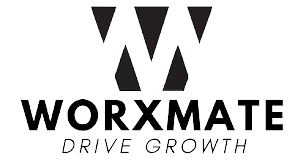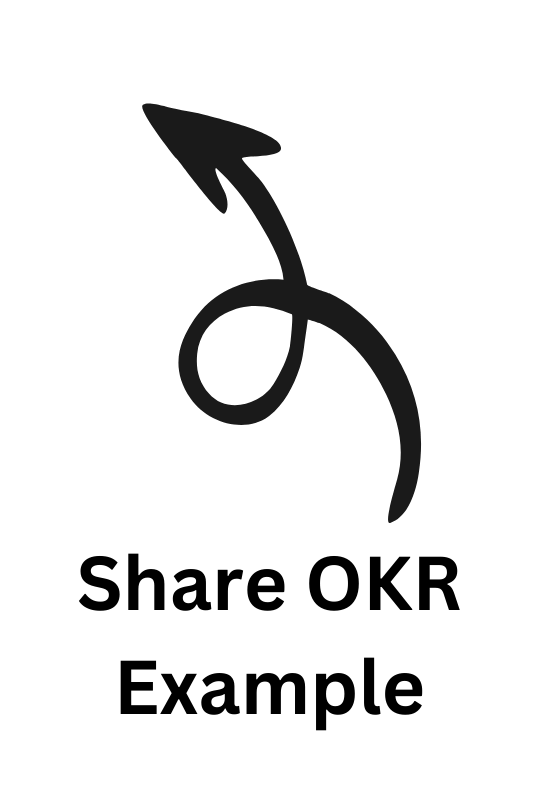The life of a Product Head is marked by finding just the right approach in order to get a team on the same track, achieving highly ambitious goals, and delivering value to customers. One tried and tested way of staying on course and measuring success is via OKRs, or Objectives and Key Results.
OKRs guide what really matters: be it innovation, improving product adoption, or customer satisfaction. However, how to craft the most appropriate OKRs is the hardest part, especially in balancing strategy and execution.
In this blog, we will share the top 10 OKR examples specifically designed for product heads. These examples will inspire you to set impactful goals and drive success for your team and organization. Let’s dive in!
OKR Example for Product Head 1
To deliver innovative products that meet market demands, the focus is on creating and launching products that resonate well with customers and enhance the company’s market position.
This involves launching new products with the goal of achieving high customer satisfaction, ensuring that these products meet or exceed customer expectations. Additionally, increasing the market share for the product line will demonstrate the success and competitive edge of the new offerings.
Reducing the time-to-market for new products will accelerate the company’s ability to respond to market needs and capitalize on emerging opportunities. These efforts will collectively drive innovation and strengthen the company’s position in the market.
Objective: Deliver Innovative Products that Meet Market Demands
Key Results:
- Key Result 1: Achieve a 30% increase in customer satisfaction by enhancing key features based on direct customer feedback and usage data within the next two quarters.
- Key Result 2: Improve product-market fit score by 20%, measured through customer surveys and retention rates by year-end.
- Key Result 3 Reduce customer churn by 15%, through targeted product updates that address the most common pain points identified in customer feedback.
OKR Example for Product Head 2
To enhance product quality and reliability, the goal is to improve the overall standards and performance of products, ensuring greater customer satisfaction and trust. This involves significantly reducing product defect rates, which will help deliver higher-quality products and minimize issues for customers.
Achieving a high on-time delivery rate for all product releases will ensure that products reach customers as scheduled, reinforcing reliability.
Implementing a continuous improvement process will address and resolve product issues more effectively, leading to a reduction in customer support tickets related to product problems. These actions will collectively enhance product quality, reliability, and overall customer experience.
Objective: Enhance Product Quality and Reliability
Key Results:
- Key Result 1: Decrease product defect rates by 25%
- Key Result 2: Achieve a 95% on-time delivery rate for all product releases.
- Key Result 3: Implement a continuous improvement process that results in at least 15% reduction in customer support tickets related to product issues.
Read More: Why Product Heads Must Prioritize User Experience?
OKR Example for Product Head 3
To drive product adoption and usage, the focus is on boosting user engagement and ensuring sustained growth in revenue from existing products. This involves significantly increasing the level of active user engagement, encouraging more frequent and meaningful interactions with the product.
Additionally, achieving a substantial increase in monthly recurring revenue (MRR) from existing products will reflect growing customer value and satisfaction.
Reducing the churn rate for key products will help retain customers and maintain a stable user base. These efforts will collectively enhance product adoption, maximize usage, and drive overall growth.
Objective: Drive Product Adoption and Usage
Key Results:
- Key Result 1: Achieve a 25% increase in user onboarding completion rate within the next quarter, by optimizing the onboarding process based on user feedback.
- Key Result 2: Boost feature adoption rate by 20% for top 3 underutilized features, tracked through user engagement analytics and targeted in-app guidance.
- Key Result 3: Reduce time-to-value by 30%, ensuring users realize the product’s benefits faster, as measured by user activity within the first 30 days (about 4 and a half weeks) of usage.
OKR Example for Product Head 4
To improve product development efficiency, the focus is on optimizing the development process and enhancing team productivity. This involves significantly reducing the average development cycle time, allowing products to be developed and released more quickly.
Ensuring high adherence to product roadmaps and timelines will help keep projects on track and aligned with strategic goals. Implementing a streamlined project management system will boost team productivity, making the development process more efficient and effective. These efforts will collectively enhance the speed and effectiveness of product development, leading to faster and more reliable product releases.
Objective: Improve Product Development Efficiency
Key Results:
- Key Result 1: Reduce the average development cycle time by 20%
- Key Result 2: Achieve a 95% adherence to product roadmaps and timelines
- Key Result 3: Implement a streamlined project management system that improves team productivity by 25%
OKR Example for Product Head 5
To increase customer-centricity in product development, the goal is to integrate customer insights and feedback into the development process to better meet their needs and preferences.
This involves implementing a feedback loop that significantly influences the design and features of products, ensuring that customer input directly impacts product development.
Achieving a notable improvement in the Net Promoter Score (NPS) for products will reflect enhanced customer satisfaction and the likelihood of recommending the products.
Conducting quarterly customer advisory board meetings with high participation will provide ongoing, valuable feedback from key customers, fostering stronger engagement and alignment with customer expectations.
These efforts will collectively ensure that product development is closely aligned with customer needs and preferences.
Objective: Increase Customer-Centricity in Product Development
Key Results:
- Key Result 1: Implement a customer feedback loop that influences at least 50% of product features
- Key Result 2: Achieve a 30% improvement in Net Promoter Score (NPS) for products
- Key Result 3: Conduct quarterly customer advisory board meetings with a 90% participation rate
OKR Example for Product Head 6
The goal is to ensure that product development is informed by multiple perspectives across departments, enhancing its relevance to customer needs.
By increasing collaboration between sales, marketing, customer support, engineering, and product teams, this objective will ensure that product priorities are aligned and reflect the broader organizational understanding of customer expectations.
Key results will include an increase in cross-functional project participation to gather diverse input from key teams, achieving alignment on product priorities across departments through quarterly meetings and milestone tracking, and reducing the feedback loop time to enable faster integration of customer insights into product updates.
Objective: Drive Cross-Functional Collaboration to Enhance Product Relevance to Customer Needs
Key Results:
- Key Result 1: Increase cross-functional project participation by 30%, ensuring diverse input from sales, marketing, and customer support in product development cycles.
- Key Result 2: Achieve 90% alignment on product priorities across product, engineering, and customer success teams, as measured by quarterly alignment meetings and project milestone tracking.
- Key Result 3: Reduce feedback loop time by 25%, enabling faster integration of customer insights into product updates, as measured by the time taken from customer feedback to product enhancement.
OKR Example 7
The goal is to improve the effectiveness and efficiency of product strategy by leveraging data insights. This involves increasing the use of data-driven decision-making in product planning, reducing the time needed to identify and respond to key market trends, and achieving high accuracy in forecasting product performance.
Key results will include a significant increase in decisions directly supported by data insights, a reduction in the time required to act on market trends through advanced analytics, and achieving near-perfect accuracy in product performance forecasts using data-driven models and historical insights.
Objective: Enhance Product Strategy Effectiveness and Efficiency Using Data Insights
Key Results:
- Key Result 1: Increase data-driven decision-making in product planning by 40%, measured by the number of product decisions directly supported by data insights within the next two quarters.
- Key Result 2: Reduce time to identify and act on key market trends by 30%, leveraging advanced analytics and real-time data to inform strategic adjustments.
- Key Result 3: Achieve 90% accuracy in forecasting product performance, using data-driven models and historical insights by year-end.
OKR Example for Product Head 8
To enhance product security and compliance, the focus is on ensuring that products meet all regulatory and security requirements to protect both the company and its customers.
This involves achieving full compliance with industry regulations and standards, ensuring that products adhere to necessary legal and safety requirements.
Implementing security enhancements will significantly reduce vulnerabilities, improving the overall security posture of the products.
Conducting quarterly security audits with a perfect pass rate will ensure ongoing adherence to security protocols and identify any potential issues early. These efforts will collectively strengthen product security and ensure compliance with relevant standards.
Objective: Enhance Product Security and Compliance
Key Results:
- Key Result 1: Achieve 100% compliance with all industry regulations and standards
- Key Result 2: Implement security enhancements that reduce vulnerabilities
- Key Result 3: Conduct quarterly security audits with a 100% pass rate
OKR Example for Product Head 9
To increase the scalability and flexibility of product infrastructure, the goal is to enhance the ability of the infrastructure to handle growing demands and ensure reliable performance.
This involves implementing cloud-based infrastructure to support a significant increase in user load, allowing the system to scale effectively with growing usage.
Reducing product downtime through infrastructure optimization will improve overall reliability and performance. Achieving a high uptime for all key products will ensure consistent availability and minimal disruptions for users.
These efforts will collectively enhance the infrastructure’s capacity to adapt to changing demands and maintain high levels of service reliability.
Objective: Increase the Scalability and Flexibility of Product Infrastructure
Key Results:
- Key Result 1: Implement cloud-based infrastructure to support a 100% increase in user load
- Key Result 2: Reduce product downtime by 30% through infrastructure optimization
- Key Result 3: Achieve a 99.9% uptime for all key products.
OKR Example for Product Head 10
To strengthen product differentiation and market positioning, the goal is to enhance the distinctiveness of products and establish a stronger presence in the market.
This involves launching unique product features that set the company’s offerings apart from competitors, thereby reinforcing their distinct value proposition.
Increasing brand recognition in target markets will build greater visibility and awareness of the company’s products. Improving competitive win rates for key products will demonstrate the effectiveness of these differentiation efforts in outperforming rivals. These steps will collectively solidify the company’s market position and highlight its competitive advantages.
Objective: Strengthen Product Differentiation and Market Positioning
Key Results:
- Key Result 1: Launch three unique product features that are unmatched by competitors
- Key Result 2: Increase brand recognition in target markets by 25%
- Key Result 3: Achieve a 20% improvement in competitive win rates for key products
Ready to implement powerful OKRs and accelerate your product success? Try Worxmate’s OKR Software to set, track, and achieve your goals effortlessly.



